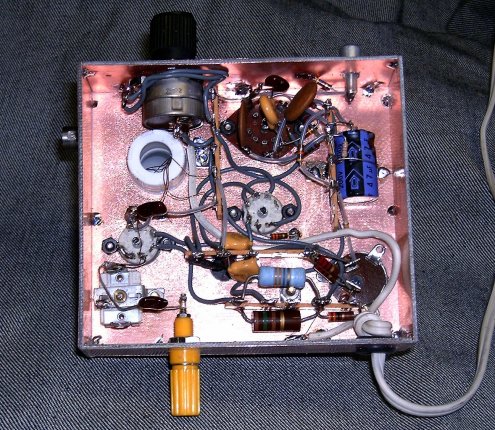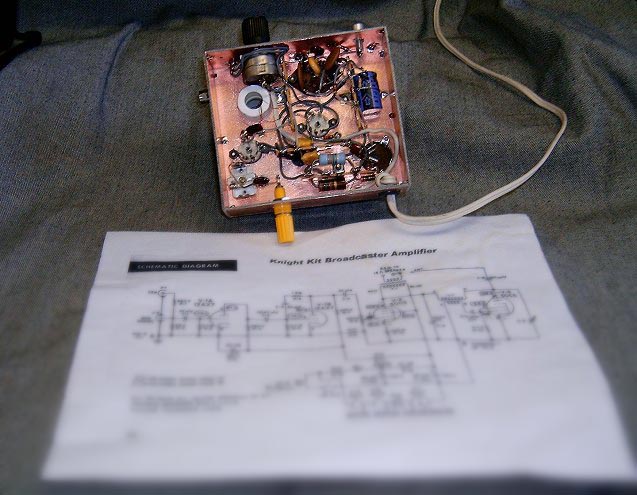This is a reproduction of a Knight Kit Phono oscillator kit that was produced in the 1970's. I got the schematic over the internet.
A couple of days later, the unit was built as pictured.

This is a reproduction of a Knight Kit Phono oscillator kit that was produced in the 1970's. I got the schematic over the internet.
A couple of days later, the unit was built as pictured.

The phono oscillators were used years ago to make it possible to connect a record player or other device to an existing AM radio without using wires, or having to install a phono jack on the radios in the household. The phono oscillator could be hooked up to a wire antenna that would make it possible to listen to records or other audio programs from anywhere in the house.
The oscillator uses a series filament string and must be isolated either by using a polarized plug, or better yet an isolation
transformer, to keep from being shocked or blowing the fuses.
The 50C5 tubes are used as a power oscillator and a Heising AM modulator. The 12AX7 is used as a pre-amp and can handle either
a magnetic cartridge or a ceramic cartridge record player pick up. The modulator produces good upward modulation.

The coil form is a eye dropper bottle that is inverted and the ring top is used to secure the coil through the chassis. The coil has 80 turns of number 32 wire close wound for the oscillator plate, and the "tickler" coil has 45 turns of number 32 wire wound close to the plate coil. The output loop consists of 2 turns of hook up wire wound on the plate coil.
The antenna connection can be made to an external loading coil that is adjusted for maximum transfer of energy, or a capacitive connection can be made to a random piece of wire with the yellow binding post on the rear of the chassis.
I measured about 2.5 watts output from the oscillator, which means that one must be careful to regulate the size of the antenna to
keep it within FCC part 15 radiation limits.
I tuned the oscillator to 1.850 Mhz in the 160 meter ham band. When it was loaded up to my inverted L antenna the oscillator was strong all over my neighborhood. I'm sure it could be heard for miles. This licensed operation is the only way to test it's DX, since it must be used with restrictions on the boradcast bands.

This made a great weekend vacuum tube project.
Dan K6PRK